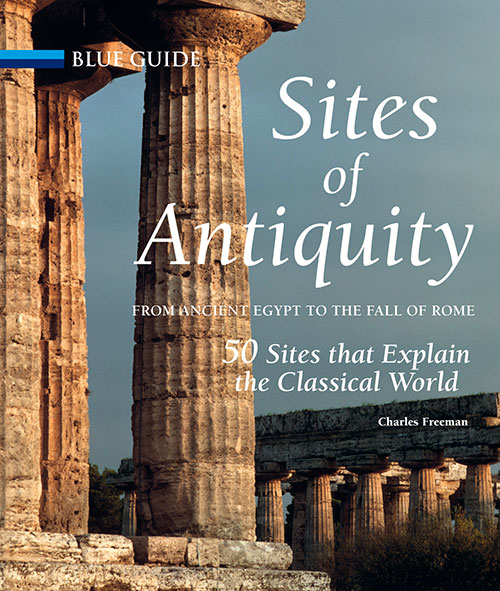
Sites of Antiquity
A great book to drool over while planning your next five summers
Reviewed by Michael K. Smith
Format: Hardcover
When it comes to subjects like history, I’m always a little suspicious of glossy, oversized picture books because so many of them stint on the text. You have to ask, “Would this still be a worthwhile book without the images?” In this case, I’m pleased to say, the answer is resoundingly “Yes.” The text in this well-produced volume does not merely accompany and identify the hundreds of illustrations, it expands on them. Freeman identifies fifty locations of historical importance, places where there’s still something to be seen, where the classical past wasn’t obliterated by later history. You can argue with some of his choices, but since he limits himself necessarily to that number, his selections all are defensible. Some are pretty obvious, like the Forum in Rome, and the Acropolis in Athens, and the Great Pyramid in Egypt, but others will likely be new to most readers, such as the beautifully preserved Greek sanctuary and theater at Epidaurus and the mosaic-rich Roman villa at Piazza Armerina in Sicily. Chronologically, the range is from the step pyramid at Saqqara to St. Catherine’s Monastery in the Sinai. Geographically, “antiquity” is defined here as “Western” and he excludes anyplace east of Palmyra.
The illustrations, none of which are original for this volume, come from a number of sources, including not only archives and museums but individuals. Principal among these is a talented architectural photographer who traveled widely in the 1970s, camera in hand, and whose very high-quality work has seldom been seen before this. Reproduction of all the photos is very clear and they’re all of a size to show detail clearly. Freeman himself is what’s called a “freelance academic,” which means he has to know how to communicate clearly to nonspecialists (as well as being to market himself convincingly). I have a considerable background myself in classical history and I spotted no obvious errors or peculiar interpretations. I’ve visited some of these sites myself, over the years, and what he has to say brings back memories. There are numerous sidebars on such topics as the Greek philosophical schools and architectural “orders,” Egyptian religious themes, and Roman water supply management. He also adds a number of ground plans keyed to the photos for places like Rome and Olympus, which helps orient the reader. The only complaint I can make is that Freeman has a tendency to toss out technical terms (especially architectural jargon) without explanation. The glossary is only two pages, which should have been tripled, at least. Other than that small caveat, this is an very nicely conceived and generally very successful attempt to engage the reader in those complex civilizations that preceded ours.






